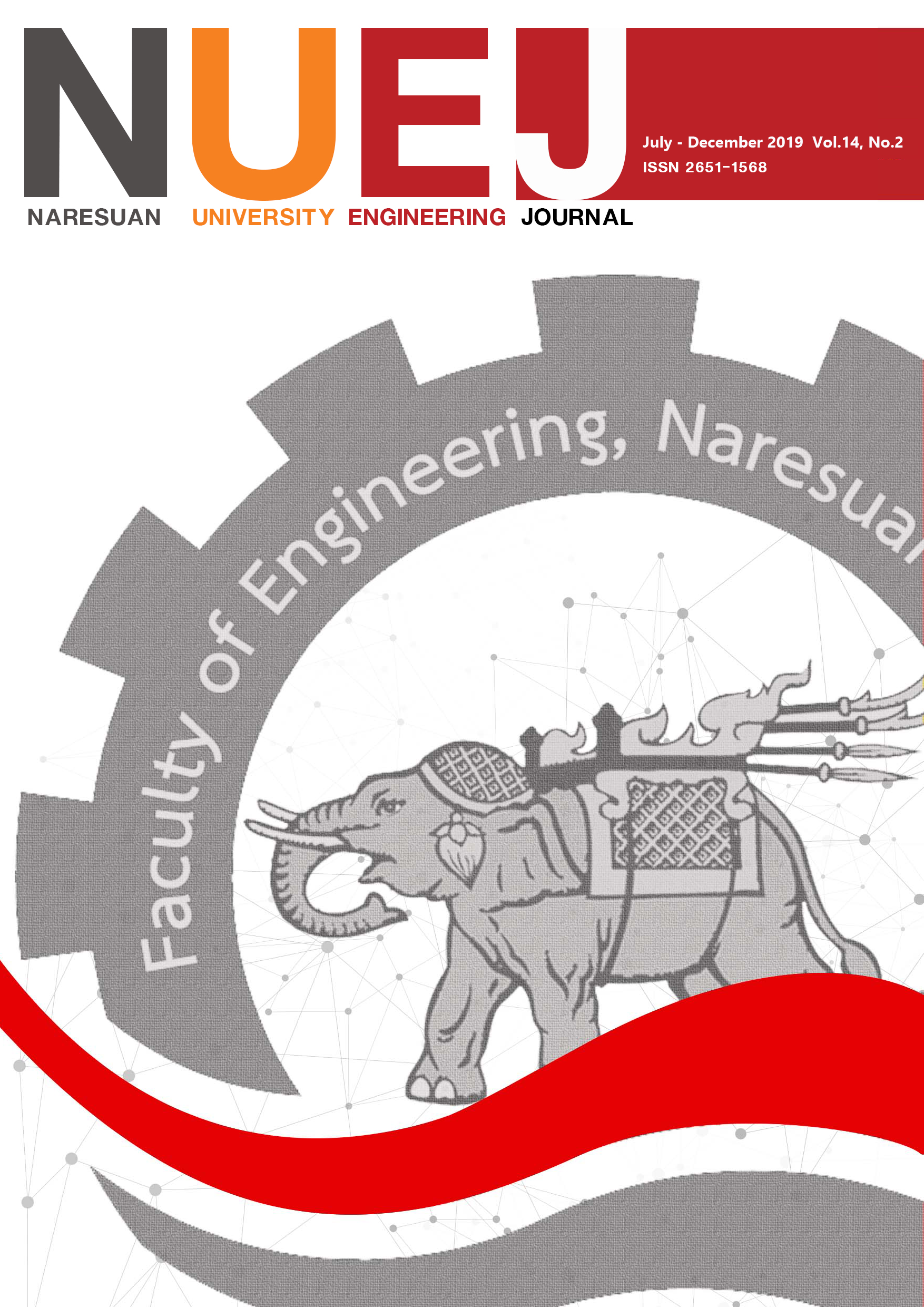Prediction Flank Wear of Carbide Cutting Tool Using Back Propagation Artificial Neural Network
Main Article Content
Abstract
This research aimed to study the Influence of turning parameters for AISI 316 austenitic stainless steel and AISI 420 martensitic stainless steel, which affected on flank wear of CVD coated carbide insert. Minitab was used for design of experiment and the statistics analysis. The study proposed the model to predict the flank wear values using artificial neural network with the back-propagation, and trained with Levenberg-Marquardt (trainlm). The input parameters were cutting speed, feed rate and depth of cut, Output was tool flank wear. The results showed that the main effect and interactions gave a significant effect on the flank wear. The result from using of back-propagation artificial neural network to predict the flank wear found that mean square error (MSE) from training equal 1.23414e-4, the testing was 1.50536e-4 for the machining process of AISI 316 austenitic stainless steel. The MSE of machining process for AISI 420 martensitic stainless steel from training equal1.45619 e-4 as the testing was 1.95559e-4. It can predict flank wear accurately and very low errors, which will be able to make production plan properly and to reduce cutting tools that affects the cost of production.
Article Details
References
Asilturk, I., & Cunkas, M. (2011). Modeling and prediction of surface roughness in turning operations using artificial neural network and multiple regression method. Expert Systems with Applications, 38, 5826-5832.
Ciftci, I. (2006). Machining of Austenitic Stainless Steel Using CVD Multi-Layer Coated Cemented Carbide Tools. Tribology International, 39, 565-569.
Das, B., Roy, S., Rai, R. N., & Saha, S.C. (2015). Studies on effect of cutting parameters on surface roughness of Al-Cu-TiC MMCs: An Artificial Neural Network Approach. Procedia Computer Science, 45, 745-752.
Ezugwu, E. O., Fadare, D. A., Bonney, J., Da Silva, R. B., & Sales, W. F.(2005). Modelling the correlation between cutting and process parameters in high-speed machining of Inconel 718 alloy using an artificial neural network. International Journal of Machine Tools & Manufacture, 45, 1375-1385.
Filice, L., Micari, F., Settineri, L., & Umbrello, D. (2007). Wear modelling in mild steel orthogonal cutting when using uncoated carbide tools. Wear, 262, 545-554.
Kalidass, S., Palanisamy, P., & Muthukumaran, V. (2012). Prediction of tool wear using regression and artificial neural network models in end milling of AISI 304 Austenitic Stainless Steel. International Journal of Engineering and Innovative Technology (IJEIT), 1, 29-36.
Kant, G., & Sangwan, K. S. (2015). Predictive Modelling and Optimization of Machining Parameters to Minimize Surface Roughness using Artificial Neural Network Coupled with Genetic Algorithm. Procedia CIRP, 31, 453-458.
Krishnakumara, P., Rameshkumarb, K., & Ramachandranc, K. I. (2015). Tool Wear Condition Prediction Using Vibration Signals in High Speed Machining (HSM) of Titanium (Ti-6Al-4V) Alloy. Procedia Computer Science, 50, 270-275.
Milton, C. S. (2005). Metal Cutting Principles. Oxford Series on Advanced Manufacturing.
Özbek, N. A., Çiçek, A., Gülesin, M., & Özbek, O. (2016). Effect of cutting conditions on wear performance of cryogenically treated tungsten carbide inserts in dry turning of tainless steel. Tribology International, 94, 223-233.
Parida, A. K., & Maity, K. (2019). Modeling of machining parameters affecting flank wear and surface roughness in hot turning of Monel-400 using response surface methodology (RSM). Measurement, 137, 375-381.
Phate, M. R., & Toney, S. B. (2019). Modeling and prediction of WEDM performance parameters for Al/SiCp MMC using dimensional analysis and artificial neural network. Engineering Science and Technology an International Journal, 22, 468-476.
Rao, K. V., Murthy, B. S. N., & Rao, N. M. (2014). Prediction of cutting tool wear, surface roughness and vibration of work piece in boring of AISI 316 steel with artificial neural network. Measurement, 51, 63-70.
Smith, W. F. (1993). Structure and properties of engineering alloys (2nd ed.). McGraw-Hill New York.

